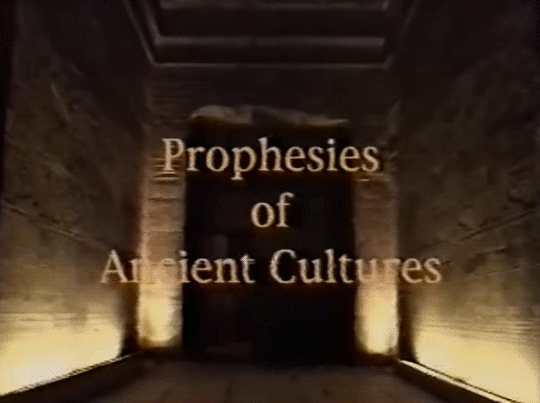#Tombs in Pyramids
Text
Giza Pyramids Combo Tour
Giza Pyramids Combo Tour
Giza Pyramids Combo Tour, By the time you arrive, you will have seen a thousand pictures of the Pyramids of Giza, but nothing compares to actually seeing these historic structures in person.
Giza Pyramids Tomb Tours,The three 4th-dynasty pyramids of Giza, Arabic Ahrmt Al-Jzah, Giza sometimes written Gizeh, were built on a rocky plateau on the west bank of the Nile River close to Al-Jzah (Giza), in northern Egypt. They were once listed as one of the Seven Wonders of the Ancient World. In 1979, the UNESCO classified the Memphis region's ancient ruins, including the Pyramids of Giza, aqqrah, Dahshr, Ab Ruwaysh, and Abr, as a World Heritage Site.
Awake in the shadows of the dazzling extolled Pyramids in Giza plateau, Enjoy your luscious breakfast and your gourmet coffee and by ready to start our Combo tour to visit Giza pyramids, It is an amazing tour around the superior historical sites we only know about it from books, reveal the mysteries of Egypt, with peace of mind. Giza Combo tour was designed for tourists who want to see all the Giza plateau details and not to be in rush, You will meet your private guide ( Expert in Egyptology ) and will be transferred to the Giza pyramids plateau ( Enry in Cheops is optional as the government sell only 300 tickets per day and no one can book it in advance, but in case You want it included You have to bein Giza pyramids area at 7:00AM or at 13:00Pm exactly to be from first tourist booking it, They sell 150 tickets in morning and the other 150 at 13:00PM)
Adorable time for promenading around the pyramids with a nice payoff at the panorama where You will see the three pyramids on one line, riding camels to go in the Sahara ( Egypt desert ) and see the 9 pyramids panorama, enjoy Egyptian traditional tea or a soft drink with the bedouin people ( desert inhabitants ) while you are enjoying to the unrepeated view of Giza pyramids with a background of Giza city.
Retrace history of 5000 years ago & uncover El-Giza pyramids and the Sphinx history and legends, Now it is walking tour behind Cheops pyramid to enter the Solar boat barques museum and then walking tour to arrive the tomb of Khufu Kha Ef (G7130-7140 ), who supposed to be one of Cheops sons ( Brother of Chephren ), and he carried many titles such as Chief of justice an vizier, not so far from his tomb is located other tombs such as Meres Ankh tomb and Seshem Nefer Theti tomb ( LG53 ), Seshem Nefer was the director of the two seats in the mansion of life and secretary of all secret commands of king Cheops, Your guide will take you inside it to explain for you about what is the mastaba and you will see few details of daily life on the walls of the tomb such as a lion attacking another animal but best scenes for daily life are not in Giza pyramids area but they are located in Saqqara pyramid complex area as their colors still preserved, Proceed tour to the valley temple and the mysterious Sphinx.
Dazzling neighbour to the ambiguous Sphinx, with enormous ancient stones, the Valley Temple, Granite and basalt wall blocks, marble floor, The valley temple not only shows models of stunning building practices with megalithic blocks , but gives an idea about Giza plateau age, The temple contains no incised inscriptions or reliefs, Free time for wandering in the temple, then visit the Sphinx, The famous ambiguous Sphinx at Giza is a tremendous statue, sculptured in rock, representing a icon of the ancient Egyptian mythology with body of lion and head of a man to represent the power and intelligence of the king. It is 17 m high and 39 m total length. It was constructed in the reign of Khafre, about 2470 B.C
After Giza Combo full day tour You will have time to visit the famous local shops either to buy souvenirs or to have idea about the Egyptian handicrafts, then enjoy lunch meal and back to hotel
Note at night We arrange also Pyramids by night ( Sound and light show in front of Giza pyramids and the Sphinx)
Giza Combo Day Tour Includes
- Pick up and drop off service from your hotel in Cairo by World tour advice private tour guide
- All Giza pyramids Combo day tour transfers by modern Ac van + 40 minutes by camel or horse carriage 30 minutes
- All tickets of entry in Giza pyramids plateau, Valley temple, Sphinx, Solar boat barque museum,
- Entry inside two of the following tombs Seshem Nefer Theti tomb, Khufu Kha Ef tomb or Meres Ankh tomb
- Private English speaking tour guide (Expert in Egyptology )
- Free time for shopping around Giza pyramids area
- Lunch meal at local restaurant included 1 soft drink
- Mineral water on board during the tour
- 1 soft drink in Giza pyramids panorama area in the bedouin camp
Giza Combo Day Tour Excludes
- Anything not mentioned in our Combo tour to Giza pyramids
- Tipping, recommended but not obligatory
For more info
Website
Mobile and what’s App:
002 01090023837
#Giza Pyramids Combo Tour#Pyramid Tomb#Giza Pyramids Tomb Tours#Visit Giza Pyramids#Cheops Pyramid Complex#Tombs in Pyramids
0 notes
Text
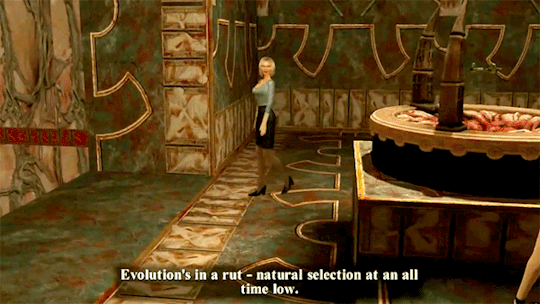

Jacqueline Natla and Sophia Leigh in Tomb Raider 1 and 3 Remastered
#Tomb Raider Spoilers#Jacqueline Natla#Sophia Leigh#Natla#natlaedit#tombraideredit#Tomb Raider#tredit#slinc#sophialeighedit#Tomb Raider Remastered#Tomb Raider 1#Tomb Raider 3#Our Gifs#gaslight gatekeep girlboss#Truly a match for lara croft#The City#The Great Pyramid#Atlantis#England#London
509 notes
·
View notes
Text
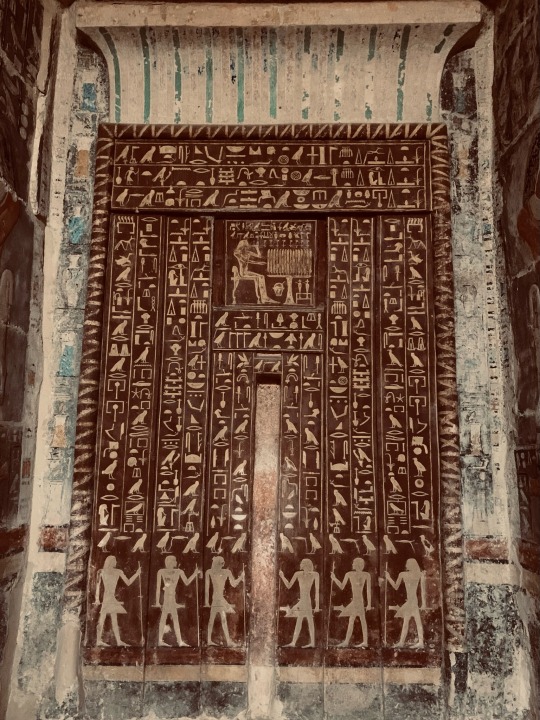
False door from the tomb of Mehu. False doors are not actual doors; they are instead representations of doors, the function of which was to allow the spirit of the deceased to go in and out. They were a focal point for offerings.
#tomb of mehu#travelswithasword#ancient egypt#egypt#egypt history#egyptian#cairo egypt#egyptphotography#egypt holidays#cairoegypt#Cairo#giza#giza pyramids#giza egypt
896 notes
·
View notes
Photo
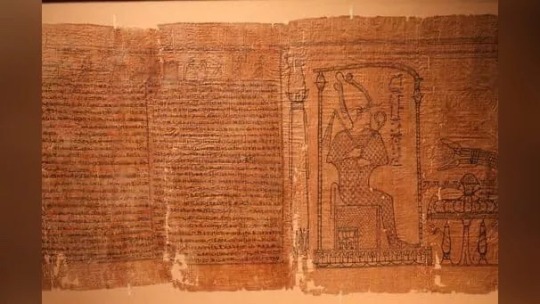
The 52-Foot-Long Book of the Dead Papyrus from Ancient Egypt
Egypt has released photos of a newly discovered Book of the Dead from more than 2,000 years ago.
Egyptian officials have released photos of an ancient scroll, the 52-foot-long (16 meters) Book of the Dead papyrus recently discovered in Saqqara. The 10 images show ancient illustrations of gods and scenes from the afterlife, as well as text on the document, which is more than 2,000 years old.
Archaeologists discovered the Book of the Dead papyrus within a coffin in a tomb near the Step Pyramid of Djoser and announced the discovery on Jan. 14 for Egyptian Archaeologists Day, but this is the first time they've released images of the scroll to the public.
It was not unusual for ancient Egyptians to bury the Book of the Dead with the deceased, but they didn't call it that at the time. Rather, modern archaeologists coined the term "Book of the Dead" to refer to a collection of texts that ancient Egyptians thought would help guide the dead in the afterlife.
Papyrus for the dead
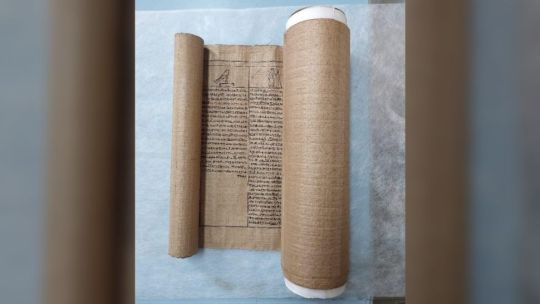
The 52-foot-long scroll was found at Saqqara in May 2022. It contains chapters from the Book of the Dead. It was recently restored and translated into Arabic and is now on display at The Egyptian Museum in Cairo. The text is written in hieratic, a script derived from hieroglyphs.
All rolled up

The papyrus was found rolled up in a coffin belonging to a man named Ahmose (not to be confused with a pharaoh who lived in earlier times). The man's name is mentioned in the papyrus about 260 times, the researchers said. He lived around 300 B.C., near the beginning of the Ptolemaic dynasty, a dynasty of pharaohs descended from one of Alexander the Great's generals.
Carefully unrolled

A team of researchers performed extensive conservation work so they could unroll the papyrus. Ahmose's tomb is located south of the step pyramid, built for Djoser, a pharaoh from the third dynasty who ruled from about 2630 B.C. to 2611 B.C. While this pyramid was built long before the time of Ahmose, it wasn't unusual to find Ahmose's tomb there, as people in ancient Egypt sometimes liked to be buried near the pyramids of long dead pharaohs.
Analyzing the scroll

The unrolled papyrus is seen here. It was written in black and red ink, and the quality of the writing indicates that it was written by a professional, researchers said. Despite the size of the scroll, there are longer Book of the Dead texts known from Egypt. For instance, a Book of the Dead papyrus, which is now in the British Museum, was originally 121 feet (37 m) long.
Book of the Dead on display

The unrolled papyrus on display at The Egyptian Museum in Cairo.
Ancient illustrations

This Book of the Dead text also contains illustrations. This image appears to show Osiris, the ancient Egyptian god of the underworld. In Egyptian mythology, Osiris' life was ritually restored after he died — something that ancient Egyptians hoped would happen to them in the afterlife.
The deity Osiris

This image shows more details about Osiris. He is shown sitting on a throne while wearing an "Atef" crown, a type of crown often gracing the head of Osiris. There appear to be offerings before him, as well as a creature who may be Ammit, a deity who consumed anyone who was not worthy of being ritually restored in the afterlife.
Husband and wife
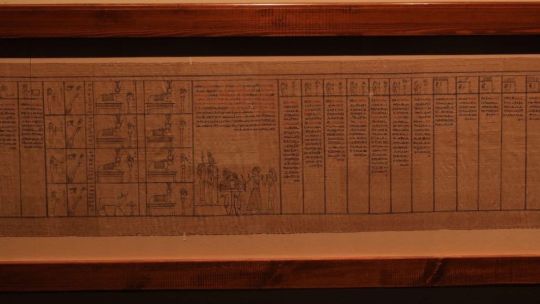
This image appears to depict offerings and a scene of a couple venerating Egyptian deities. This couple may be Ahmose and his wife (whose name is not known). Not much is known of Ahmose, but he was wealthy enough to have an elaborate copy of the Book of the Dead made for him.
Leading the cow

A number of scenes are illustrated in this section of the Book of the Dead. At the far left, a cow appears to be led somewhere — perhaps to be given as an offering. A number of images depict boats, which could be used to navigate the underworld.
Weighing against a feather
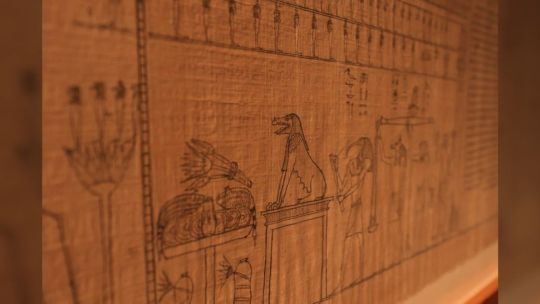
This close-up shows a creature, possibly Ammit, sitting before Osiris. In ancient Egyptian mythology, the heart of the deceased is weighed against the feather of Maat, a god associated with truth, justice and order. If the person's bad deeds in life were great, their heart would be heavier than the feather, and Ammit would devour the deceased.
By Owen Jarus.
#Book of The Dead#Saqqara#Step Pyramid of Djoser#afterlife#ancient tomb#ancient grave#ancient artifacts#archeology#archeolgst#history#history news#ancient history#ancient culture#ancient civilizations#ancient egypt#egyptian history#egyptian hieroglyphs#egyptian art#ptolemaic dynasty#ahmose#The 52-Foot-Long Book of the Dead Papyrus from Ancient Egypt
384 notes
·
View notes
Text

Inktober 2023 Day 19-DA MUMMY
Some monsters don’t get the pleasure of waking up on their own terms. Ancient royalty often, finds itself being awoken, rudely, by the occasional trespassers and graverobbers, who soon learn a new meaning to the term: NO TRESPASSING!!
#my art#artists on tumblr#art#inktober#illustration#micron pens#the mummy#curse of the mummy#curse of the pharaohs#ancient egypt#monster#undead#Inktober 2023 day 19#Inktober 2023#classic horror#pyramid#sarcophagus#tomb#pen and ink
59 notes
·
View notes
Text
Beware the curse of the pharaohs! Howard Carter feared such a curse when he breached the tomb of King Tut, and it seems he was right. Were the tombs of ancient Egypt deliberately seeded with uranium, and was radiation the “disease that no doctor can diagnose”?
21 notes
·
View notes
Text
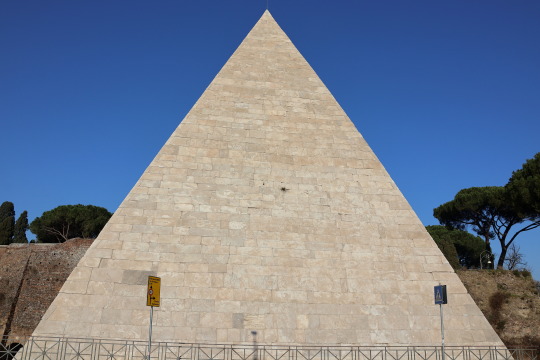
The Pyramid of Cestius, Rome, Italy's pyramid. It was built as a tomb for Gaius Cestius in 18-12 BCE. It was later incorporated into the Aurelian city walls (3rd century CE).
#pyramid#rome#roma#italy#italia#tomb#mausoleum#taphophilia#taphophile#photography#original photography#lensblr#photographers on tumblr#tombs#ancient rome#ancient history#wanderingjana
8 notes
·
View notes
Photo
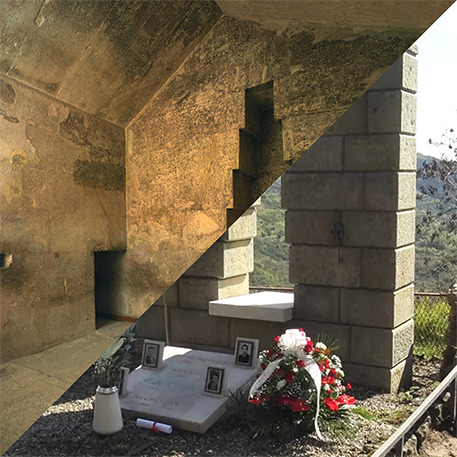
Queen’s Chamber | Great Pyramid of Giza, Egypt, 2570 BC
VS
BBPR, Tomb of Rocco Scotellaro, Tricarico, Italy, 1957
#pyramid#giza#egypt#ancient egypt#archaeology#stone#rocco scotellaro#bbpr#architecture#grave#tomb#basilicata#carlo levi#adriano olivetti#contemporary architecture#cemetery
55 notes
·
View notes
Text
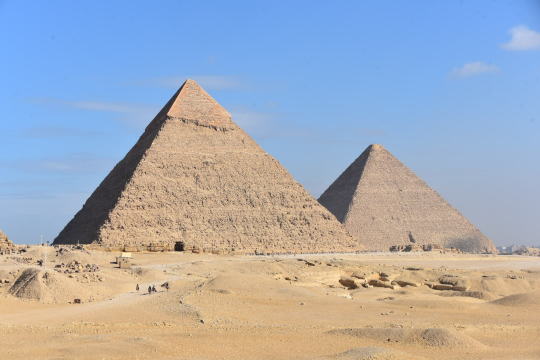
The Pyramids of Khufu and Khafre
Giza, Cairo, Egypt 2024
3 notes
·
View notes
Text
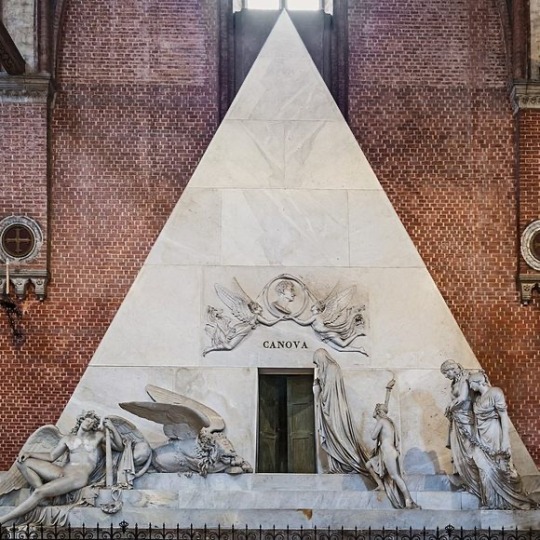
Antonio Canova
#interior#architecture#higginsandcole#antonio canova#tomb#grave#Italy#Italian#architect#painter#sculptor#artist#pyramid
25 notes
·
View notes
Photo

#lol#funny#christian#church#thought for a second this was genuinely my mom's church#crazy vbs sets how i love thee#i helped with an ancient egyptian one once#where we turned the basement corridor into the inside of a pyramid tomb#it was cool af
18 notes
·
View notes
Text



The pyramids of Khafre and Khufu (the Great Pyramid) and associated tombs and mortuary temples.
As with most temple complexes in Egypt, these cemeteries would have been like small cities within themselves, filled by the priests who staffed the mortuary temples and made offerings to the dead, as well as the many people who would have attended them, not to mention the overseers of building works, labourers and all of the support they too would have needed to bring provisions to and from the site.
The idea of the pyramids as isolated and deserted tombs in the middle of the desert is a more modern fantasy. These were always a central part of a busy, well-organised, stratified and highly-bureaucratic culture. The astonishing thing is not how they were built, but the sheer complexity and organisation of the ancient culture that already existed in 2600BC.
#Giza#pyramids of giza#pyramid#pyramids#Egypt#ancient egypt#egyptology#Kemet#Kemetic#Kemeticism#tombs#royal tombs#pharaoh#pharaohs#mortuary temple
85 notes
·
View notes
Photo

Step Pyramid of Djoser, Saqqara Necropolis, Egypt
Architect: Imhotep
40 notes
·
View notes
Photo

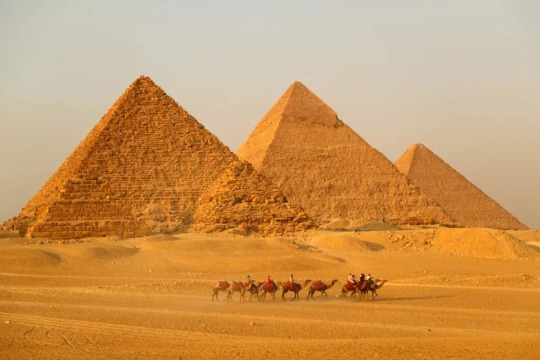




Archaeologists Discover Secret Tunnel Inside Great Pyramid of Giza
Perhaps it could lead to a real-life Chamber of Secrets.
A 30-foot-long hidden corridor was discovered by scientists Thursday near the main entrance of the 4,500-year-old Great Pyramid of Giza in Egypt, Reuters reported.
The pyramid — considered the last of the seven wonders of the world still standing — has been undergoing regular searches using infrared and cosmic-ray imaging since 2015 as a part of the Scan Pyramids project.
Officials said the newly unearthed hallway could lead to more knowledge about the structure.
“We’re going to continue our scanning so we will see what we can do … to figure out what we can find out beneath it, or just by the end of this corridor,” said Mostafa Waziri, head of Egypt’s Supreme Council of Antiquities.
The Great Pyramid was constructed as a monumental tomb around 2560 BC during the reign of the Pharaoh Khufu, or Cheops. Built to 479 feet, it now stands at 139 meters and was the tallest structure made by humans until the Eiffel Tower in Paris in 1889.
Five rooms atop the Pharaoh Khufu burial chamber in another part of the pyramid are also thought to have been built to redistribute the weight of the massive structure, according to Nature journal.
It is also possible the pharaoh had more than one burial chamber, Waziri added.
Waziri also revealed that the corridor could be used to help balance the weight or contain a secret chamber within the structure.
The Great Pyramids were built in 2560 BC during the reign of Pharaoh Khufu (reign circa 2551 b.c. to 2528 b.c.) and stood at a whopping 479 feet — the tallest man-made structure until the Eiffel Tower in 1889.
This secret passage is not the first thing to be discovered within the structure. In 2022, scientists released a study that showed two “mysterious voids” within the pyramid from a 2017 scan.
“We plan to field a telescope system that has upwards of 100 times the sensitivity of the equipment that has recently been used at the Great Pyramid,” wrote the researchers.
“Since the detectors that are proposed are very large, they cannot be placed inside the pyramid, therefore our approach is to put them outside and move them along the base.”
“In this way, we can collect muons from all angles in order to build up the required data set.”
#Archaeologists Discover Secret Tunnel Inside Great Pyramid of Giza#secret passage#secret chanber#archeology#archeolgst#ancient tomb#ancient grave#ancient artifacts#history#history news#ancient history#ancient culture#ancient civilizations#ancient egypt#egyptian history
127 notes
·
View notes
Photo
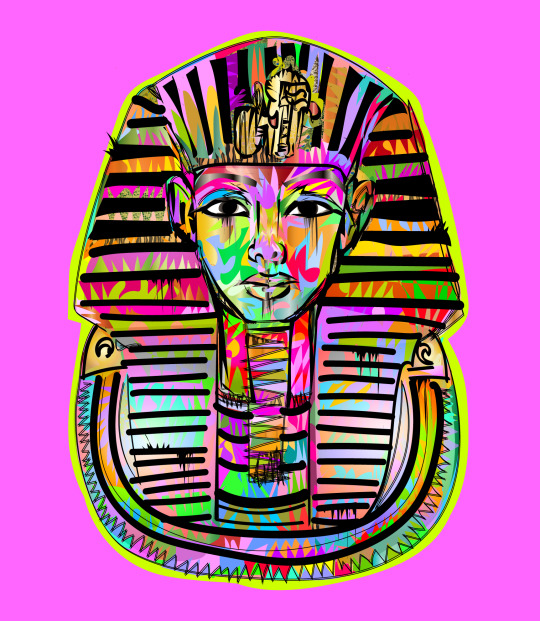
KING TUT TOMB
#king tut#tomb#pyramid#gold#book of the dead#energy#electricty#moon#toth#osiris#ra#eye of horus#hours#chronos#time#technodorme1#ancient egypt#history#knowledge
29 notes
·
View notes
